Off-road driving requires maximum traction. Airing down your vehicle’s tires is one of the best ways to increase traction off-road. Changing your pressure can make the difference between making it through and making it over or merely continuing to spin your wheels.
The tire pressure should be lowered to gain better traction on dirt, sand, and even rocks when off-roading. Low pressures can also prevent punctures on gravel or dirt roads when driving at medium speeds so that the tread conforms to the individual stones and sharp protrusions.
It is only recommended to reduce the air pressure in your tires (pounds per square inch or psi) if you enjoy off-road travel. To prevent overheating and a tire bursting off the rim, the lower the tire pressure, the slower the speed.
Certainly, lower pressures are better for grip, allowing more drive or tractive force. Try this grip if you ever go four-wheel driving; you’ll be surprised how far you can go and how much easier it is on the vehicle.
Why Should You Lower Tire Pressure while Off-Roading?
- Lowering the air pressure in your tires (pounds per square inch or psi) is a good idea for off-road travel. When tires are inflated to their maximum cold pressure, they can carry the maximum highway load. The load capacity decreases as the pressure is lowered.
- No matter if you are on sand, snow, dirt, rocks, or mud, you will have more traction when you tire down. Your tires should not weigh more than 15 pounds. Wheels with deadlocks need to be pumped with air. It may be a good idea to keep an eye on things when running at lower pressures.
- It would help if you aired up immediately after you deflate. You should not drive on paved roads with underinflated tires. High speeds can cause inflated tires to blow out. Before you hit the road again, check that your tires are properly inflated.
What Tire Pressure for Off-Roading Is Suitable-Tune the Tire
Lowering Tire Pressure while Off-Roading– Significance:
Depending on how low you go, the performance will be much better. You will need the following two tools:
- A low-pressure tire gauge is the first. You need to read it. 7 psi and 12 psi are significantly different on the trail.
- Second, you need to quickly and effectively deflate a tire, which will be done through the valve stem. Thanks to an inexpensive valve core remover, it takes me about a minute and a half to air down this tire from 30 psi to 7 psi.
- I usually recommend between 10 and 12 as a good starting point. That range is safe with a wheel that doesn’t lock to beads. Once you drop below 10 psi, you risk de-beating your time. To sandwich this outside bead, I have a bead lock with an external ring for bolting to the main portion of the wheel.
- If I go very low on air pressure, there is something to keep the tire in place.
Airing down your tires off-road is good for two reasons:
- The first benefit is that it will conform to the terrain around you, especially when you are rock crawling and you are really in need of a good tire.
Having a larger footprint will be helpful when wheeling in mud or sand, which will give you better traction. Having better traction means conforming around the rock and gripping.
- You don’t need to air down your tires off-road, even if you are only shaving 15 or 10 psi off your street pressure. Your vehicle will handle better and perform better.
When returning to the highway after a trip off-road, be sure to inflate your tires below their maximum cold pressure.
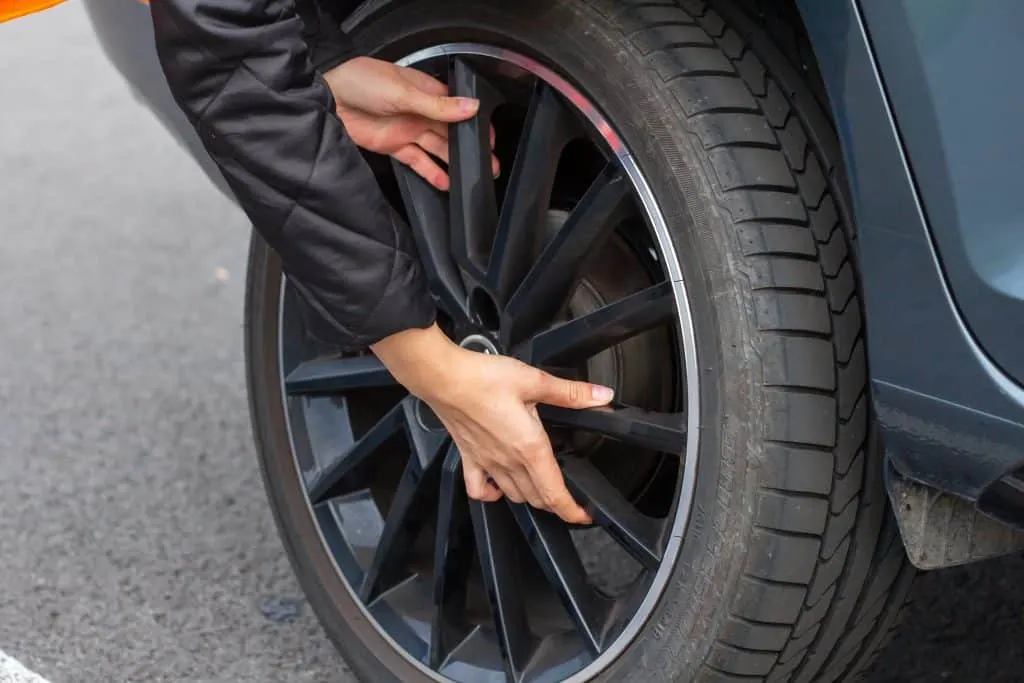
Tire Pressure According to Off-Road Terrain:
- If you lose traction, lower the tires’ pressure to 15psi to 25psi, depending on how deep the sand is. Sand will be softer if the air is hotter.
- When driving on gravel or unsealed roads, you might want to lower the pressure a bit but not too much, between 32 and 36 psi.
- It is difficult to work in mud, especially if the soil is black. Use pressures of about 24 psi.
- If you must have traction on rocky, slow terrain, you may want to increase the pressure to 24-28psi.
| Terrain | PSI |
|---|---|
| Bitumen | 32-40 psi |
| Sand | 15-25 psi |
| Mud | 24 psi |
| Gravel | 32-36 psi |
| Rocks | 24-28 psi |
Maintaining traction and pointing in the right direction is crucial if you want momentum.
- Assuming 2100 kg Front and 3400 kg Rear Axle Weights:
Surface | Max Speed (Mph/kph) | Front PSI | Back PSI |
Road | 62/100 | 40 | 65 |
Track | 40/65 | 25 | 40 |
Sand | 12/20 | 16 | 25 |
2. Assuming 2200 kg Front and 3400 kg Rear Axle Weights:
Surface | Max Speed (Mph/kph) | Front PSI | Back PSI |
Road | 62/100 | 40 | 73 |
Track | 40/65 | 25 | 46 |
Sand | 12/20 | 16 | 25 |
It may seem strange to you that the front pressures in the chart are lower than those in the rear. If you want a bit more grip and comfort, you can easily get away with 10-15% less pressure in the front. As front tires typically carry less weight, they can afford to be inflated at a lower pressure.
Benefits of Lowering Tire Pressure:
Low tire pressures can be beneficial when driving off the smooth pavement;
- You will first greatly improve the performance and capability of your vehicle.
- Further, you will be able to maintain your suspension and driveline parts much easier.
- In addition, it will make life a whole lot simpler for you, your passengers, and your cargo.
- As you air down the tire, the tread will have a larger footprint on the ground. With a larger contact patch, you’ll have a lot more traction than you would with a very stiff tire.
- You’ll also find that if you’re trying to float on deep sand, deep snow, or any bottomless surface, a heavily inflated tire will spread out the load more evenly, so you’ll have much better traction with lower tire pressure.
- It will become softer and more cushioned when you air down your suspension. Your tires cannot absorb the smaller rocks and bumps on the road before compressing the springs and shocks. There’s another benefit to that.
- In serious off-road situations, the additional suspension travel you gain by lowering your tire pressures will make articulation over rocks and uneven terrain much easier.
- With more suspension travel, it’s also easier on your springs and shocks to air down and get that smooth ride.
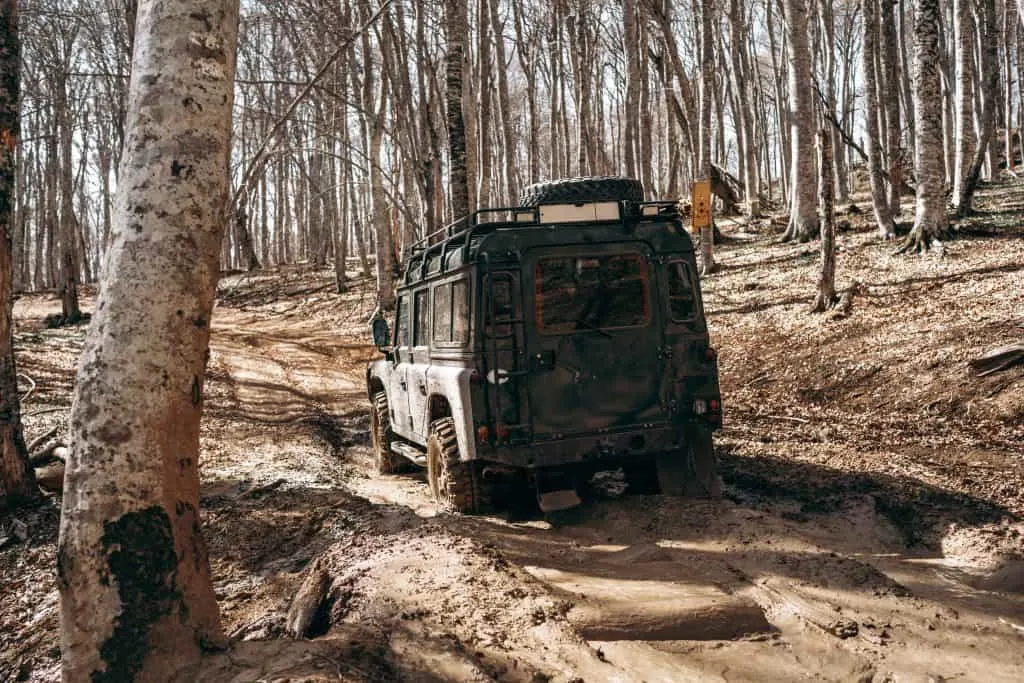
Terrains Rich in Mud:
What about mud while you can air down your tires if you are driving through sand or snow?
It is best to inflate tires to 15 psi for driving through muddy terrain. By doing so, they will tackle tricky terrain efficiently and safely. It is advantageous to drive on wider tires in rough terrain since they have more flexibility.
For softer terrains, such as sand or mud, you are going even as low as 10 psi is recommended, although sometimes this can prove risky. Low tire pressure increases the likelihood that the tire will be damaged or fall off your vehicle.
Useful Tools Related to Lowering Tire Pressure:
- My glove compartment should always contain a small tire pressure gauge. The gauges are generally more accurate than those you find in gas stations or service stations, and they are equipped with a small 12v air compressor, so I never get caught out and the capability to fix punctures while driving.
- A spare tire is always in my vehicle in case of a puncture; this has been useful many times.
Off-road Air Compressors- To Lower the Tire Pressure:
To lift your truck, you will have to apply more pressure. When you’re riding high-speed roads in the back, remember to reinflate your tires after you’ve had fun.
Types of Off-Road Air Compressors:
There are two primary uses for air compressors:
- If the trail changes to pavement or mid-trail, you should reinflate your tires. After defeating your tires off-road, you usually do this to improve traction, soften the ride, or avoid tire damage.
- Inflating repaired tires on the trail when only one spare tire is available after you’ve damaged two tires.
- In addition to powering air tools and axle differential lockers, some air compressors also supply power to air tools.
Each machine performs tire-related functions differently. Tire-inflating air compressors come in two types: portable and onboard. Offroad racers and hardcore wheelers favour portable air tanks filled with CO2 and nitrogen, especially because they rapidly ply tires.
On-Board Air Compressors:
The onboard air compressors are located within your vehicle’s engine bay or anywhere else simply for as long as they are connected to the battery. Considering that they are already connected and ready to be used when needed makes them exceptionally convenient. Additionally, onboard air compressors are quite versatile: they can also power pneumatic control for air lockers and differentials in axles;
In large fashions, electric air tools, such as air impact wrenches, may even remove wheel nuts.
Switches typically need to be integrated into the dashboard when an onboard machine is installed. It could also be installed somewhere else inside the cab to lock differentials from inside. This should eliminate the need for turning the hubs on the wheels while mountaineering.
| Pros | Cons |
|---|---|
| The trail is exceptionally convenient Various uses Tools and air lockers can be powered | Installation costs are quite high at first Modifications may be needed to fit some engine bays Time-consuming and costly repairs and upgrades |
Portable Air Compressors:
An off-road air compressor usually comes in a case or bag you can carry inside and outside your car. Batteries provide electricity, so you must attach them to the terminals. A few models can be plugged into cigarette lighter ports, but they tend to be too small for large truck tires.
The main reason portable air compressors are more flexible than onboard compressors is that you could use them in different vehicles. Additionally, they are easily portable because they have battery clip wires. There is, however, a downside to using a mobile air compressor: unpacking, connecting the battery, permitting it to cool before restarting it. This is rather time-consuming and difficult.
| Pros | Cons |
|---|---|
| Cheaper than anything else No installation required Very bendy | Using percents and time is time-consuming |
CO2 and Nitrogen Tanks That Can be Transported:
Portable CO2 tanks are filled with CO2 or nitrogen, just like scuba diving tanks. Because these gases are compressed higher than oxygen inside the tank and increase substantially even when inflated into a tire, rapid CO2 inflation, you can save time with portable tanks if you have big tires that take a long time to fill or if you’re only going offroad for a short period at the same time.
Therefore, there can be a finite amount of gas in the tank. A transportable air compressor will probably be necessary as a backup.
| Pros | Cons |
|---|---|
| Inflating the tires briefly Fills large tires (35+ inches) with ease | The cost is quite high, considering you will still need another air compressor The range of inflations is finite Needs to be refilled It takes a lot of space to house a big tank. |
400P Portable Air Compressor:
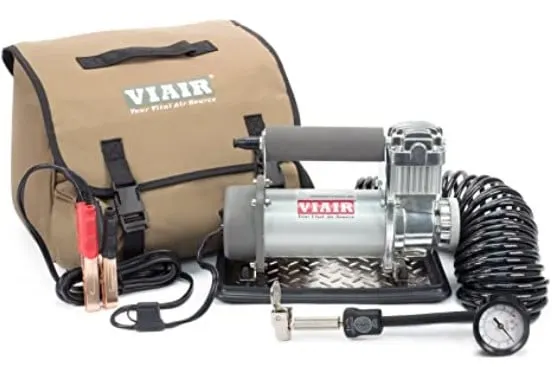
By attaching its supplied heavy-duty battery clamp power leads to the battery, inserting the lever style air chuck into a tire valve stem, and simply pressing the start button, the Viair 400P Portable Compressor can instantly inflate 35-inch tires from 0 to 30 PSI in less than 5 minutes by activating the unit. An inflator/deflator hose and gauge are included in the 5-in-1 inflator/deflator kit.
Moving from 35 PSI to 60 PSI takes approximately 3 minutes. VIAIR recommends that the motor be allowed to cool after use for 30 minutes to carry out this higher duty cycle after inflating tires up to 35″.
| Pros | Cons |
|---|---|
| Precise gauge Self-lubricating unit, arguably maintenance-free Featuring a vibration isolator to increase stability | Heat builds up in the motor Power cord is relatively short |
ARB CKMTA12 Twin Motor Portable Air Compressor:
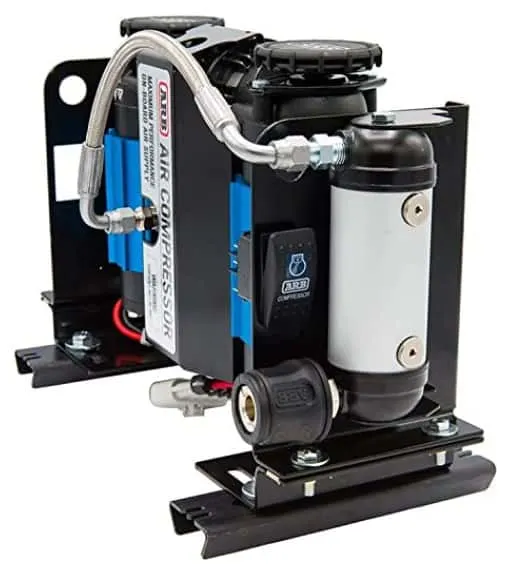
This compact onboard compressor is designed specifically for Air Locker activation and sealed for moisture and dust resistance. It features a full wiring loom for simplified installation and plug-in connectivity to the Air Locker control solenoids.
Air Locker Activation System is compact and made from quality components for quiet operation and long life. It is suitable for running on most 12V accessory supplies, drawing very little power.
Its twin motors take about 90 seconds to go from 20 PSI to 40 PSI. A compressor with a maximum pressure of 150 PSI can deliver impressive results.
| Pros | Cons |
|---|---|
| Speedy refilling Small and compact The case includes a compartment for an air hose Switch that regulates pressure between 135 and 150 PSI. The motor does not overheat Simple setup | A relatively higher price Heavier than expected, but not surprising |
VIAIR 300P Air Compressor:
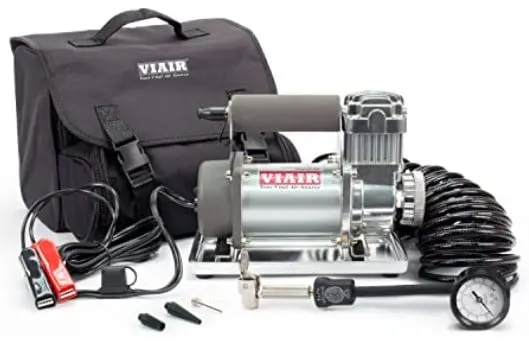
With the 300P, you can inflate tires up to 33 inches by simply connecting the power leads to your battery, connecting the tire chuck to the valve stem and turning the unit on. Inflator/Deflator 5-in-1 inline pressure gauges can be used to check tire pressure.
| Pros | Cons |
|---|---|
| One system for both inflation and deflation With multiple compartments, this bag is of high quality Grip that feels good Alligator clamps of exceptional quality Lightweight Air hose with a 25-inch diameter | After use, the motor becomes quite warm Power cable is only 8 inches long |
Also Read:
How Much Do Off-Road Tires Cost? Regressive Analysis
Essential Off-Road Accessories for Trucks
Frequently Asked Questions (FAQs):
Should I air down my tires for off-roading?
When you venture off-road, you want the maximum amount of traction. When you air down your vehicle’s tires, you will be able to increase traction off-road. Off-road, you’ll get more traction when you air down, whether you’re driving through sand, snow, dirt, rocks, or mud.
What is the right pressure for you?
It takes a little trial and error to figure out what works best for you since tires and vehicles are all different.
Don’t exceed the tire’s sidewall information.
Additionally, the more loaded up your vehicle is, the more likely you will need to increase your tire pressure.
Which pressures are appropriate for the different types of terrain you may encounter on your trip?
The following are some of the main pressures you can apply to different terrain types:
- If the road is sealed, the pressure should be between 32 and 40 psi.
- Gravel requires a minimum of 32-36 psi.
- Try deflating the tires between 15-25 psi in the sand if you lose traction.
- I would probably recommend a pressure of 24-28 psi if it is rocky and slow, but you want the traction.
- It’s not easy to deal with mud, and if it’s black soil, you are in for some interesting experiences. Set your pressure to 24 psi.
Offroad tires should have what PSI?
Off-road tires should be inflated to 15-20 PSI, which is lower than the 35 PSI +/- found on stock tires of most vehicles. The optimal tire pressure for sand that is very soft – like dune running – maybe 10 PSI, but at that low pressure, you run the risk of a tire coming off the rim.
What is the maximum distance you can drive with inflated tires?
Tires that are inflated will heat up at highway speeds. I drive modestly between trails, maybe 35 mph at most. If the trail is rocky, I try to keep the air pressure at 9-10 psi. I can usually get by on dirt roads with a pressure of +/-20 psi, and on the pavement, I may be able to go to 50-55 psi.
What is the lowest tire pressure without bead locks?
Tire pressure should not be dropped below 10 psi if you do not have Beadlock wheels. Going below 10 psi without some locking mechanism to secure the tire’s bead to the wheel can cause the tire to de-bead.
How low can you drive?
The pressure per square inch is 20 pounds.
Generally, you can drive with a tire pressure no lower than 20 pounds per square inch (PSI) if you have standard passenger tires (ninety per cent of all vehicles have them). If you have a tire pressure of less than 20 PSI, you are at risk of suffering a blowout.
Is it necessary to deflate off-road tires?
When driving on sand, mud, or other loose surfaces, a wider, softer tire with a larger contact patch will increase tire float, preventing the tire from digging in deeply. Depending on the material, air pressure may be as low as 12 to 15 PSI for sand and mud.
How much PSI should off-road road tires have?
A good starting point is 15-20 PSI for most off-road vehicles instead of 35 PSI +/- for most stock tires. The ideal tire pressure for very soft sand – such as dune running – is 10 PSI, but at pressures that low, you run the risk of the tires coming off.
Is it because airing down makes the ride smoother?
In addition to driving comfort, directional stability, cornering, and braking grip, tire pressure affects many other important vehicle performance characteristics.
Tires inflated lower = Larger contact patch.

This is Surya. I am an experienced off-roader. I have been off-roading for many years across several terrains. I am passionate about 4×4 driving and want to share my knowledge and experience with others.
My goal is to provide you with the most comprehensive and unbiased information about off-roading.
I curated this article through my personal experience and expertise, and I hope it helps you with what you are looking for.

 (+91)9123743026
(+91)9123743026
 24/1 Nibedita Sarani. M.B. Road, Kolkata- 700051, India
24/1 Nibedita Sarani. M.B. Road, Kolkata- 700051, India
Top 10 Best Off-Road Mud Tires: Guide to Select The Best – Offroadhandbook
Wednesday 26th of January 2022
[…] Should You Lower Tire Pressure When Off-Roading?How to Read ATV Tire Size? The Complete Guide […]